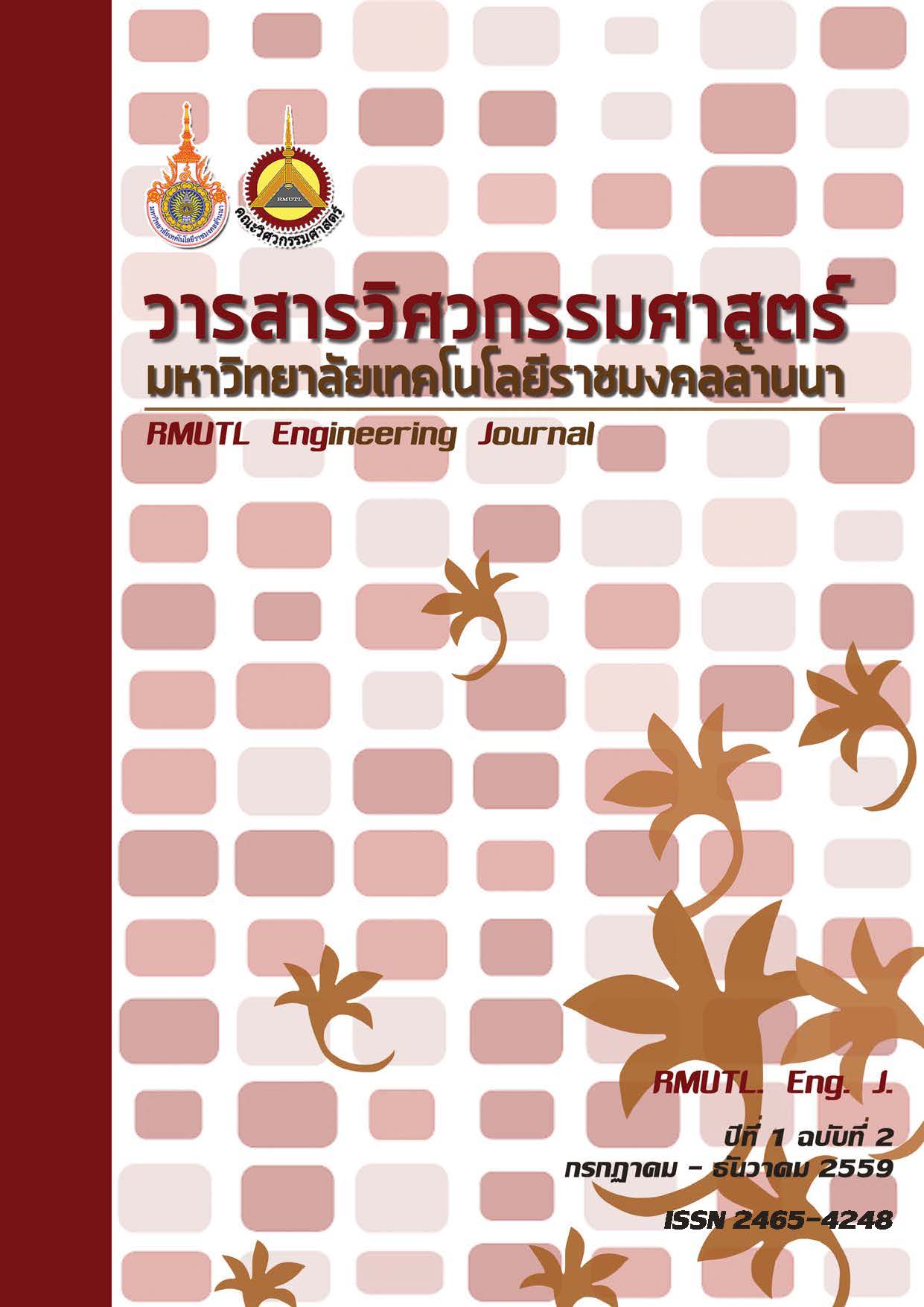The Analysis of Center of Gravity Positioning Error in Patient Removing Hydraulic Craneto Prevent Overturns
DOI:
https://doi.org/10.14456/rmutlengj.2016.17Keywords:
patient removing, center of gravity, hydraulicAbstract
The objective of this project was to design and assembly of hydraulic crane for patient removing purpose tolift and move the patient with the reduction of the risk of the lifter’s muscular injury. The analysis of center of gravity (CG) of this unit which moved while lifting weight loads at any base angles and lift angles was done for prevent overturns by computer program. The experiment to find center of gravity of this unit at some working conditions by hanging method was setup to verify the computer program. The testing result showedthat hydraulic pressure in hydraulic piston which controls this unit base angle was not varied significantly with any base angle when hydraulic pressure in hydraulic piston which controls its lift angle was linear varied directly to weight load. The analysis of CG positioning by computer programing showed that CG positioning was depended on base angle, lift angle and weight load. The maximum CG positioning shift distance from origin at its pole base was only 0.67 meter at 90 degree base angle, 20 degree lift angle and 120 kilograms weight load. This value was still in base range and could guarantee its safety. This computer program result was compared toplumb lines experiment and found 20.44 percent error which due to accumulated error from each components positioning.
References
2. Patient lifter unit. Available from : http://www.dolphinstairlifts.com/products/[Accessed 20thJune 2014].
3. Pichaiya. T and Mongkolgeard. K. Innovation oflow cost hydraulic structure for patient lifting purpose;2001: P 5 – 9.
4. Buengmum. L. Impact on half-side parlay sishome attendant. Half-side paralysis attendingactivities at attendant’s house; 2009: P 75 – 78.
5. Kachinthorn. N. Mobile patient lifter: Daily NewsPress: November; 2013.
6. Electrical patient lifter. Available from: http://thai.alibaba.com/product-gs/jy-ywd01-electric-patient-lift - 570964256.html [Accessed 10th September2014].
7. Finding the Center of Gravity Using Plumb Lines.Available from: https://www.nasa.gov/audience/foreducators/topnav/materials/listbytype/ETE_Plumb_Lines.html [Accessed 15th June 2016].










